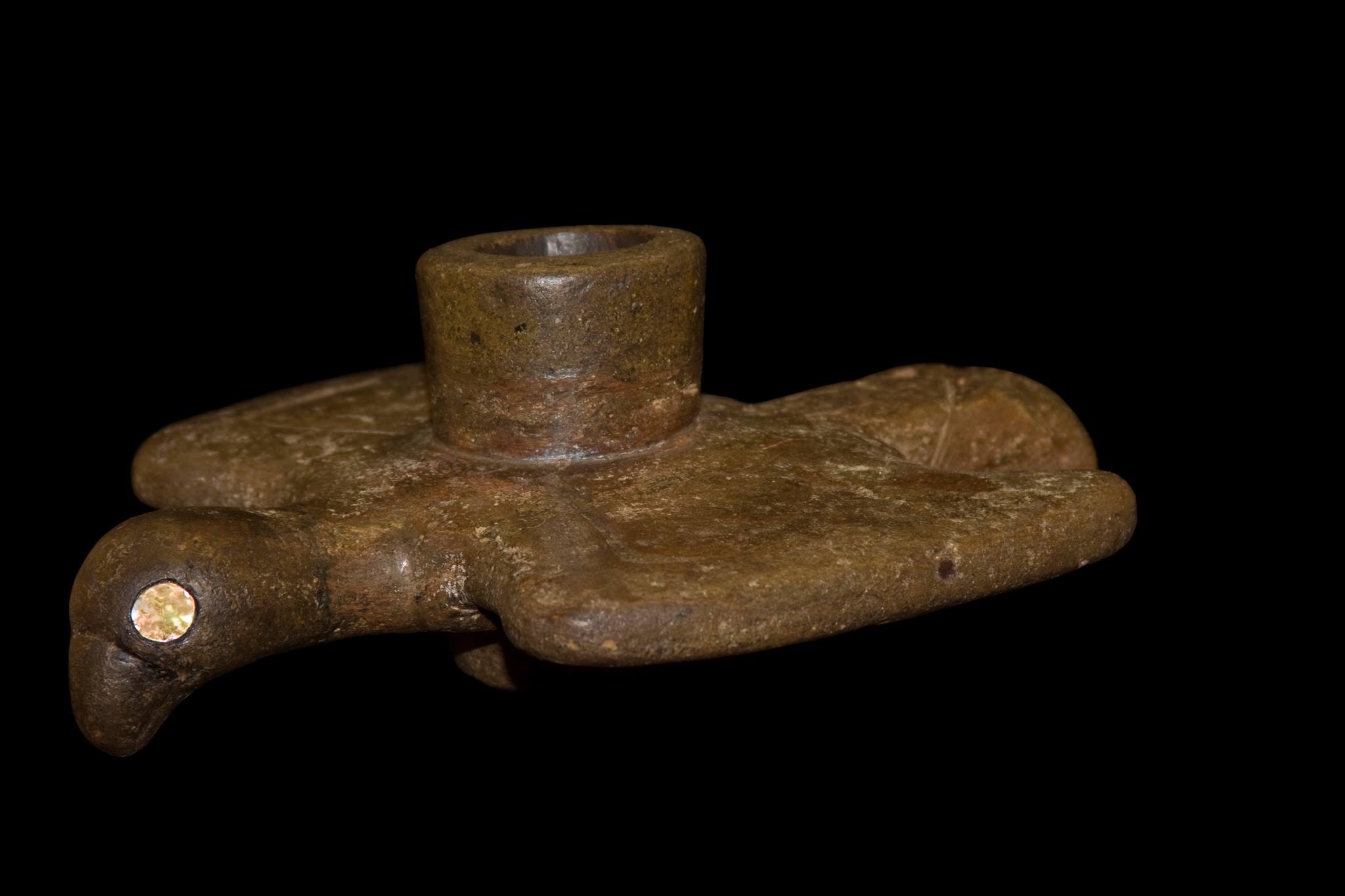Museum Monday is a weekly series where the museum of the month will highlight a different artifact from their collection.

The Hopewell was a culture flourishing in and around modern-day Ohio and eastern North America as early as 100 B.C. in what’s known as the Middle Woodland Period. We do not know the actual name of these people. The name given to the civilization actually comes from the property owner where the mounds were first excavated. Their settlements were small villages with thatched roof homes. Their mounds, which still exist today, were places of ceremony, ritual and burial, and not the actual living spaces. The Hopewell culture had extensive trade networks stretching from the East Coast to the Rocky Mountains, even down to the Gulf of Mexico. The exotic materials (like mica, shark’s teeth, obsidian, copper and marine shells) gained from these trades are clearly celebrated in their art.
This extraordinary pipe was found in Ross County, Ohio, dating to 200 B.C.-200 A.D. It is known as the “Eiker Flying Eagle” great pipe, named after Charles Eiker of Miamisburg, Ohio. The “flying eagle” is 9″ long and carved out of solid stone, with abalone shell inlaid eyes. The shell likely came from the Great Lakes, although it is possible it was sourced through other coastal trading connections. While we only have the stone pipe remaining today, it would have also been attached to a long pipe stem, which has since perished. Birds, along with various other animals like deer and bears, were frequently depicted in Hopewell art. The sophisticated carving is a testament to the Hopewell craftsman.
Additional information about the Hopewell culture is available here.
ABOUT THE MUSEUM

The Museum of Native American History reopened to the public April 2 after being closed for more than a year. MONAH is now open from 10 a.m. to 4 p.m. Wednesday through Saturday. Visitors must reserve free, timed tickets in advance and follow COVID-19 safety protocols. MONAH is located at 202 SW O Street in Bentonville, Arkansas.

